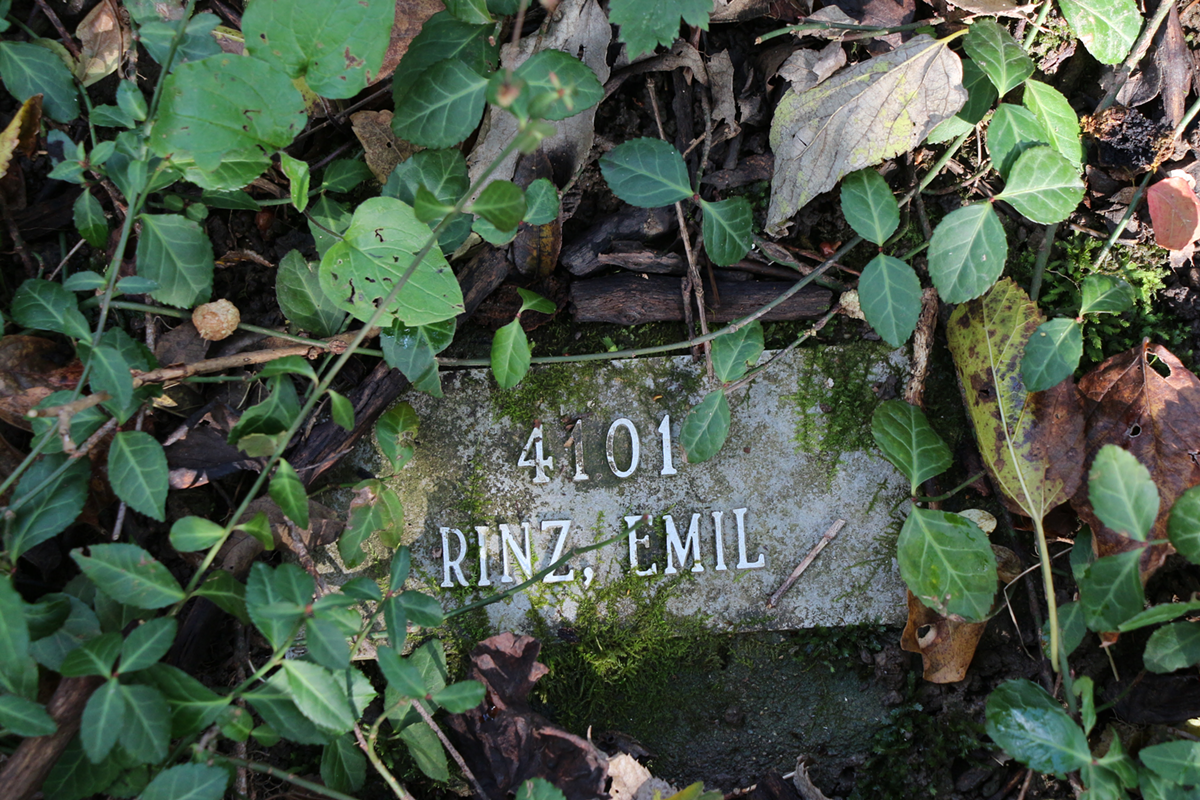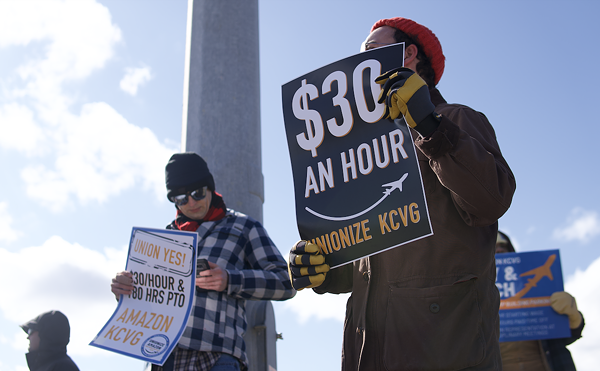A long-neglected mass grave in Cincinnati is one step closer to joining the National Register of Historic Places.
During a Dec. 8 meeting for the Ohio Historic Site Preservation Advisory Board, the governor-appointed board unanimously seconded a motion to recommend Cincinnati's Potter's Field for the National Register of Historic Places.
The nomination is a welcome step for advocates of the site, but a member of the state's archeology council told CityBeat there's still more to watch.
Morgan hopes that getting Potter's Field on the National Register of Historic Places would give the site some protection should future federal grants open up options for restoration.
"If large amounts of federal money are brought in to transition it to an appropriate and respectful forested space, as opposed to a bunch of invasive species, it would have to be approved by the State Historic Preservation Office (SHPO) who would set standards for what that work looks like."
The Cincinnati Parks Board is in charge of managing Potter's Field for the city. Cincinnati Parks spokesperson Rocky Merz told CityBeat that Cincinnati Parks director Jason Barron was unavailable for an interview, but provided a statement on the historical status recommendation for Potter's.
During a Dec. 8 meeting for the Ohio Historic Site Preservation Advisory Board, the governor-appointed board unanimously seconded a motion to recommend Cincinnati's Potter's Field for the National Register of Historic Places.
The nomination is a welcome step for advocates of the site, but a member of the state's archeology council told CityBeat there's still more to watch.
Alan Tonetti is chair of the Government Affairs Committee of the Ohio Archaeological Council. He said the National Park Service will decide if Potter's Field will be joining the historical list.
"The State Historic Preservation Officer will forward this to the National Park Service, who then will review it," Tonetti said.
What is Potter's Field?
Potter's Field, located in West Price Hill, is a historical burial ground where people (often poor or unidentified) were buried from the mid-1800s to 1981. Potter's also became the final resting place for many people with complex stories, including cholera patients, Civil War soldiers, bodies used for medical science, people who were involuntarily committed to institutions and individuals whose families were unaware of their burial location. The graves, most of which are unmarked, stretch across roughly 26 acres at the northwest side of Guerley Road into Rapid Run Park.
CityBeat recently detailed the extensive efforts of local historians and community members who are working to restore dignity to the forgotten site.
One of those people is Mike Morgan, an attorney and adjunct horticulture instructor at the University of Cincinnati. Morgan submitted an application for Potter's to join the National Register of Historic Places through Price Hill Will, a nonprofit community development corporation.
Morgan applied for the historical designation after receiving a federal History of Equal Rights (HER) grant to perform a non-invasive archeological survey around Potter's Field. The survey provided up-to-date documentation of the location of some graves, including those in and around Rapid Run Park, which Cincinnati built on top of graves in the 1930s.
"It feels really good," Morgan said after the board meeting. "It opens up a lot of future potential for the site."
Morgan applied for the historical designation after receiving a federal History of Equal Rights (HER) grant to perform a non-invasive archeological survey around Potter's Field. The survey provided up-to-date documentation of the location of some graves, including those in and around Rapid Run Park, which Cincinnati built on top of graves in the 1930s.
"The city didn't realize that parts of this area were a cemetery to begin with, so, they've already changed behavior but that's going to be the most immediate impact," Morgan said. "We aren't going to see some wildly inappropriate things that have been planned — not maliciously by the city, but just as a failure to understand what was there — those things won't happen now."
Potter's Field advocates, including family members of those interred at the site, have pushed for years to see the cemetery cleaned up and properly maintained. Invasive plant overgrowth has completely swallowed much of the site beyond access. Shallow burials, some only 18 inches from the surface, make landscaping the area a delicate, macabre task.Who gets to choose what happens to Potter's Field?
Morgan hopes that getting Potter's Field on the National Register of Historic Places would give the site some protection should future federal grants open up options for restoration.
"If large amounts of federal money are brought in to transition it to an appropriate and respectful forested space, as opposed to a bunch of invasive species, it would have to be approved by the State Historic Preservation Office (SHPO) who would set standards for what that work looks like."
Tonetti, who was the archaeology manager at SHPO from 1982 to 1996, told CityBeat that the designation would be largely symbolic, but that, pursuant to state and federal laws, the city and federal government would both be expected to work with SHPO.
"For practical purposes, all a (NRHP listing) is, is basically an honorary designation. That this piece of property is historically significant. However, when federal or Ohio public funds are going to be used to affect the property, that is when federal or state laws come into play," Tonetti said.
The Cincinnati Parks Board is in charge of managing Potter's Field for the city. Cincinnati Parks spokesperson Rocky Merz told CityBeat that Cincinnati Parks director Jason Barron was unavailable for an interview, but provided a statement on the historical status recommendation for Potter's.
"It is an important and significant site, especially for all of those buried there, their family members and descendants, and is certainly worthy of this recognition," Merz said. "This reiterates and reaffirms our commitment to always protecting and preserving this cemetery, with the sole purpose of properly honoring, respecting, and remembering everyone buried here."
Follow CityBeat's staff news writer Madeline Fening on Twitter and Instagram.
Subscribe to CityBeat newsletters.
Follow us: Apple News | Google News | NewsBreak | Reddit | Instagram | Facebook | Twitter | Or sign up for our RSS Feed
Subscribe to CityBeat newsletters.
Follow us: Apple News | Google News | NewsBreak | Reddit | Instagram | Facebook | Twitter | Or sign up for our RSS Feed








